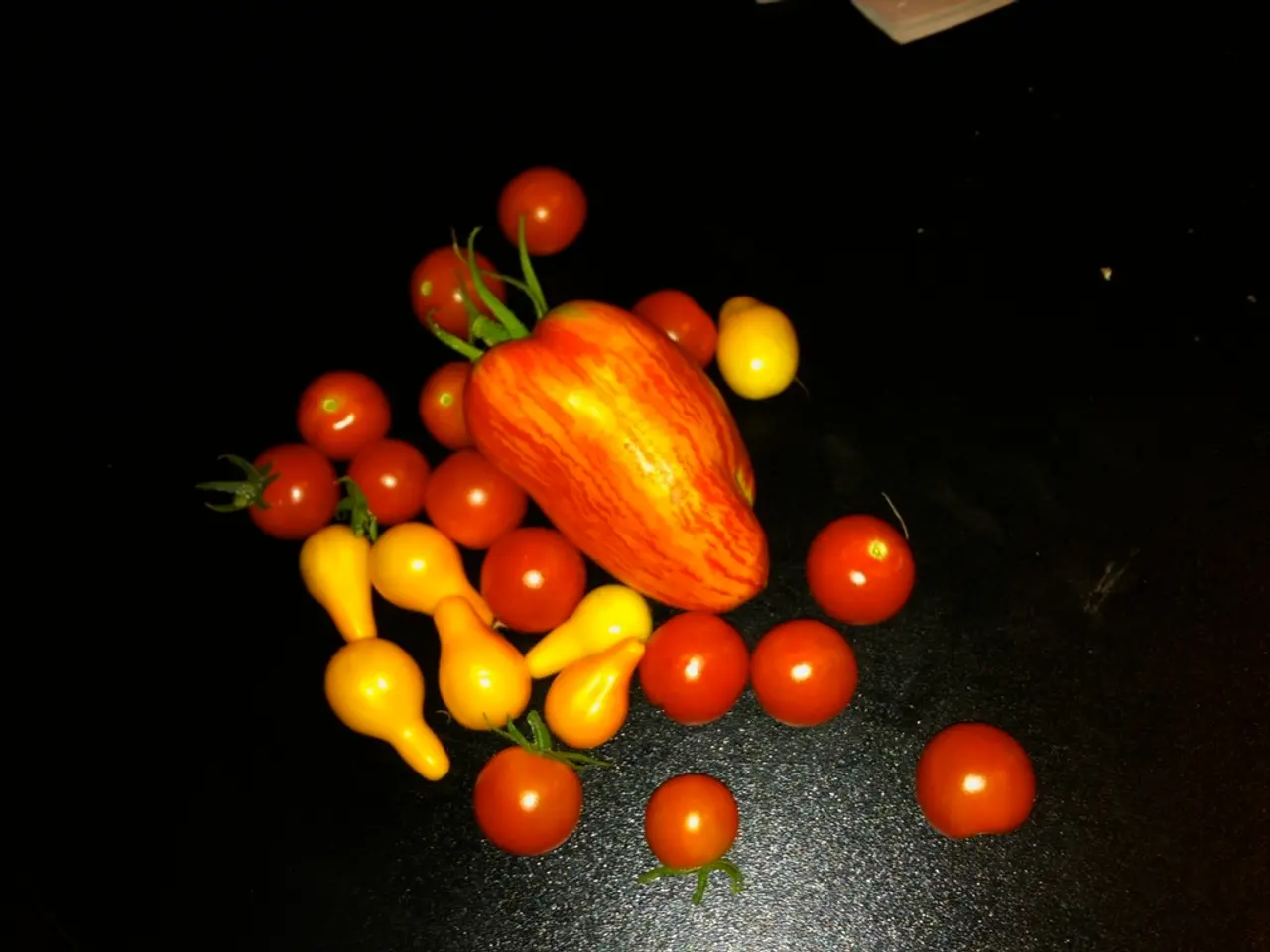Farmlands, specifically orchards, continue to decrease in size - Fruit orchards persistently decrease in area across various locations
In North Rhine-Westphalia (NRW), Germany, mixed orchards—a unique blend of various fruit tree species—are more than just a source of fresh produce. These agricultural hotspots harbour a rich biodiversity, supporting a myriad of wildlife, from birds and insects to other fauna.
These orchards, often featuring high-stem fruit trees, are a common sight in NRW. Apples, the most common fruit, are frequently accompanied by pears, plums, mirabelles, and other varieties. Overripe fruits attract butterflies, birds, and even hedgehogs, providing food for caterpillars and larvae.
However, these mixed orchards face several challenges. Climate variability, habitat fragmentation, and historical land use changes have taken a toll, with many older trees suffering from insufficient water supply due to drought. As a result, there has been a significant decline in yield since 2019.
Efforts to preserve these biodiversity hotspots include habitat improvement and species protection. For instance, nest boxes for birds are installed in pollard willows as part of conservation projects in Eastern Westphalia, a region within NRW.
Climate change is expected to bring further challenges. Warmer temperatures, altered precipitation patterns, and increased drought or extreme weather events are likely to affect the species composition and phenology of orchard plants. Traditional fruit tree varieties might struggle, necessitating the introduction or favoring of more drought- and heat-tolerant cultivars.
The structure of mixed orchards may shift as growers adapt to climate stressors by changing species mixes, altering pruning and management practices, or transitioning toward different agroforestry systems. Emerging agricultural technologies, such as precision agriculture and robotics, may support adaptation by monitoring orchard health and optimizing resource use under changing conditions.
Despite these challenges, there is hope for a good harvest this year, at least in the Lower Rhine region. Moreover, mixed orchards remain free from pesticides and chemical fertilizers, making them a sustainable choice for fruit production.
As we look to the future, the composition of mixed orchards may change, with certain fruit types like walnuts, chestnuts, peaches, and apricots becoming more prevalent due to their ability to fare well in a changing climate.
Expert Franz-Wilhelm Ingenhorst estimates there are currently at least 10,000 to 15,000 hectares of mixed orchards in North Rhine-Westphalia. The German Fruit Juice Industry Association predicts a nationwide yield of 450,000 tons of mixed orchard fruits by 2025. However, more old trees are being lost than new ones are being planted, indicating a need for concerted efforts to preserve these valuable orchards.
For a more detailed and updated perspective, consultation of regional agricultural extension services, environmental agencies, or specialized local research on orchard ecosystems in NRW is recommended.
The community can contribute to the preservation of mixed orchards in North Rhine-Westphalia by planting more fruit trees, thus offsetting the loss of old trees. A home-and-garden lifestyle can promote the production of agricultural products like fruits, adding to the sustainability of these orchards.
Gardening enthusiasts can enhance the biodiversity within these orchards by cultivating a variety of fruit tree species, attracting a wider range of wildlife and ensuring a continuous food supply for caterpillars and larvae.




